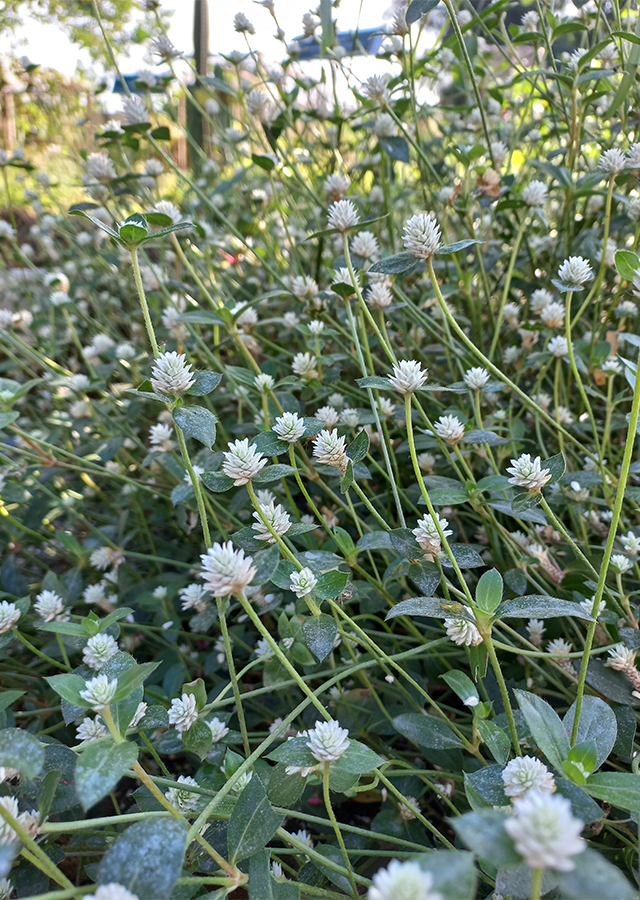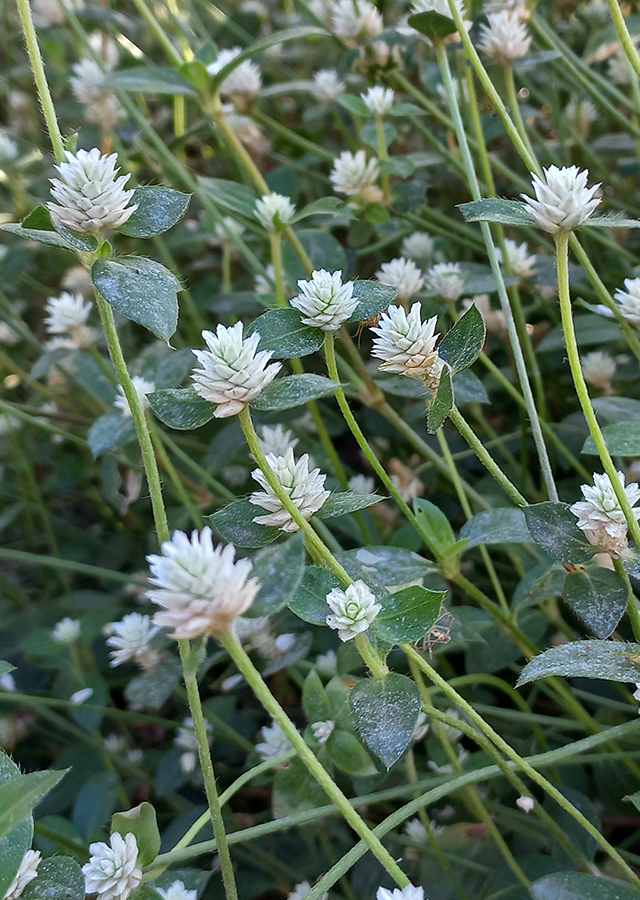Traditional Herbs from Gomphrena serrata
asthma
- Prepare enough white button grass leaves and wash them until clean.
- Boil the leaves until boiling.
- Strain the boiled product.
- Drink while warm.
diarrhea
- Take enough white button grass leaves then wash until clean.
- Boil the leaves until boiling.
- Let it warm/cold.
- Strain and drink to treat diarrhea.
What is Gomphrena serrata Looks like??



Parts of Gomphrena serrata that could be used
- Leaves
- All Parts of the Plant
Gomphrena serrata Distribution
White button grass is native to America. The exact limits of its native range in the Americas are not well defined because it has been introduced to countries in North and South America outside its native range. This species has also been introduced to India and Guam, and has been reported as an invasive weed in India, Guam, and Ecuador. All parts of G. serrata are used in traditional medicine in India to treat various conditions, and extracts from G. serrata have also been shown to have anti-microbial, anti-inflammatory, analgesic and antioxidant activities.Agroecology of Gomphrena serrata
White button grass grows from the lowlands to a height of 2,400 m above sea level. Grows in moderately fertile, well-drained soil in full sun. White button grass is able to tolerate moderate heat and drought. Grows in sandy soil, black clay with a layer of lime, hardened sandy limestone soil, on coastal sand dunes and in salty soil at acidic, neutral or alkaline pH.
Morphology of Gomphrena serrata
- Fibrous roots, rooted at nodes and lower segments.
- Stem prostrate, branches spreading or tip erect, hairy.
- Leaves have sitting leaves or petioles, up to 0.6 cm long, green blades, oval to oval , 1.5-7.5 \u00d7 0.5-2.5 cm, apex rounded or obtuse, hairy.
- Flowers\u00a0spike-shaped inflorescence color\u00a0head white, round to short cylindrical, diameter 9-13 mm, bractlets with denticulate apex along the keel. Flowers: lanate dense tube,\u00a0perianth lobes white, narrowly oval, 4-5 mm, apex thinned.
- Pac fruit. (utriculus), ovate, 2.2 mm, apex pointed.
- Seed 1.2 mm.
Cultivation of Gomphrena serrata
Generative propagation using seeds.
Gomphrena serrata, more details :
Chemical Content of Gomphrena serrataFlavonoids, essential oils, alkaloids, tannins, phenols, saponins, steroids, acid compounds, glycosides, amino acids, oleuropein, phytosterols, terpenoids.
Benefits of Gomphrena serrata
Treats asthma, diarrhea, hemorrhoids, dermatitis and allergies. Has anticancer, antimicrobial, anti-inflammatory, analgesic and antioxidant activity
Simplisia of Gomphrena serrata
Another Facts for Gomphrena serrata :
Synonym of Gomphrena serrataAchyranthes ternata Host ex Fisch., C.A.Mey. & Avé-Lall., Amaranthoides decumbens (Jacq.) M.Gómez, Celosia decumbens Moq.
Habitus of Gomphrena serrata
Herb. Annual or annual herb, 0.5 m high
Habitat of Gomphrena serrata
- Roadside
- Grassland
- Land
No comments:
Post a Comment